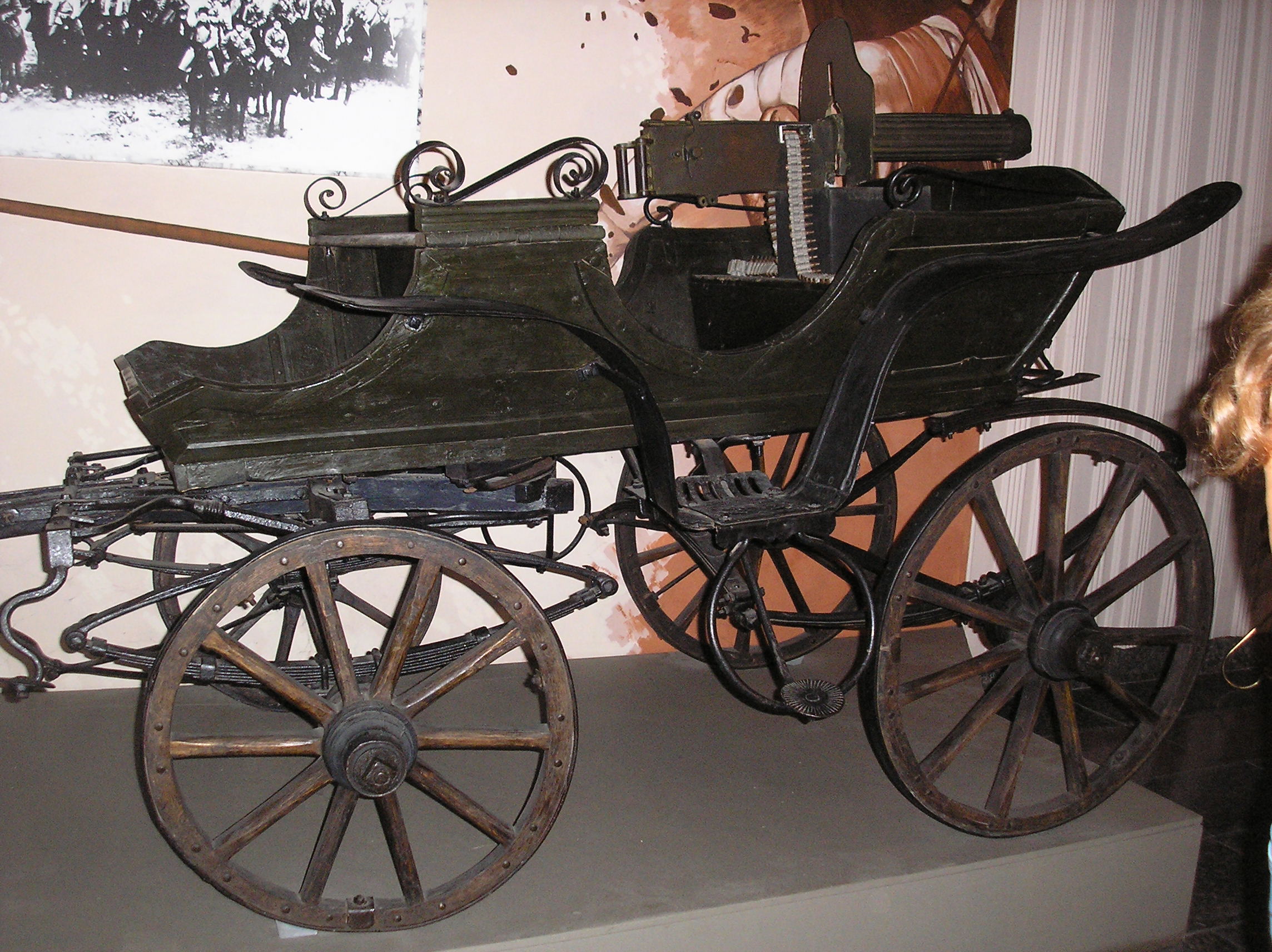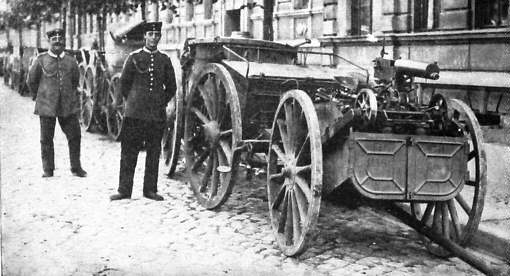@Argsilverson
Yes, I noticed a message of Yours to which I had been relating was missing
at least I understood what You meant, enough to answer
@Mark Plant
the screwing was a joke, cause I tried answer in a humorous way to a post now missing.
I know that screws cannot hold firing MG
now - the MG were NOT fixed ??
technically I do not understand how they would be able to fire from the cart and on the move then
and in addition, making a difference between MG transported in carts and tachankas becomes even more obsolete
this is also obvious from the intial mount on artillery limbers
btw, here is a pic of a Tachanka, but I don't know if the painting is authentic.
it is called "Machno's wagon" in Guliai Pole Museum:


btw, тачанка and
Taczanka are a difference only in writing, the pronunciation is virtually the same
(as in color/colour or armor/armour)
there is a not well refenced article in Wikipedia, longer in german, that
states that:
the name may come from нетичанка in Russian, нэ тыкалысь in Ukrainian and
netytschanka in Polish - all three denoting a light sprung carriage.
it has been already used in WWI, showing a picture of captured ones in Berlin:

it was standard built by 1930 USSR and Poland), quoting an anecdote that quality control for the "new type tachanka" would have involved dropping it from the third floor of the „Tschesternaya“ factory, which procedure it was meant to survive without damage
at least for these versions, the suggestion that they were painted dark green would seem correct
and that it has been used in WWII still, by USSR, Poland and Germany! (with a twin AA mount), referenced by this:

and that the MG were fixed (at least for the later versioins I would second that, maybe with a on/off fixing - I know very well how badly the modern versions of a german MG kicks, even more on the AA mount)
some russian literature is quoted, and there is a link to the Great Soviet Encyclopedia, but this is as far as I can go without Russian
here also a picture of a bronze artistic depiction

a resin model

and the same in finished

this AA mount seems to be from 1920

and this version from 1919

at least we can see what a variety this simple name can mean
when it comes to modelling, we can assume that everything was used that was at hand in large numbers, from horse artillery limbers to rural transport to hackney coaches, as long as it was sprung
(here we can take a philosophical detour about the symbolism of the bourgeois hackney coach or the rural transport of the Kulak being used for the revolution

)
and tactics, well, one can see russian WWI versions in Jeeps or the US jeep with.50 cal center mount
and some LRDG vehicles should have followed the same principles:
quick and mobile support weapon for mobile unarmoured cavalry/mounted infantry tactics - be it motorized or not